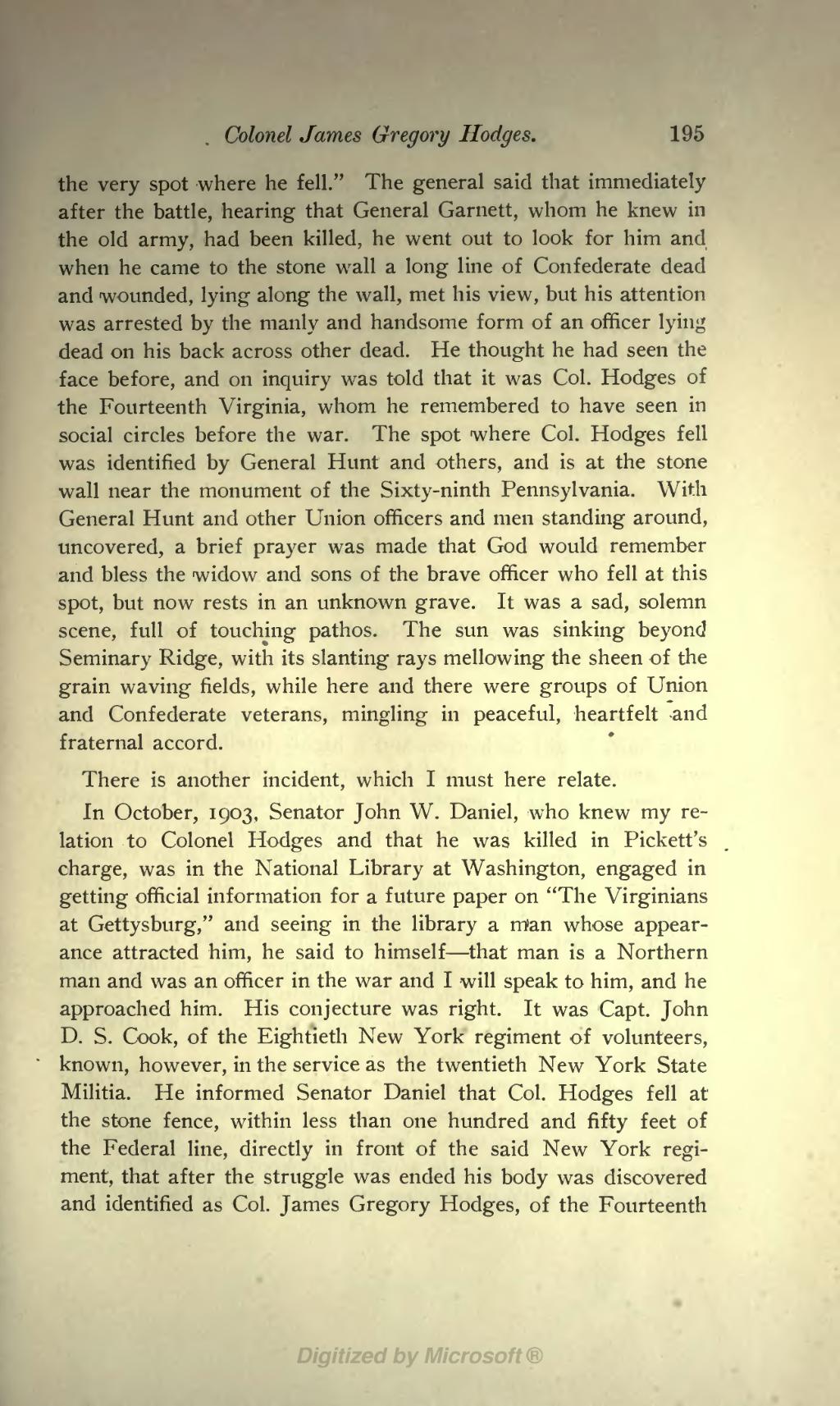the very spot where he fell." The general said that immediately after the battle, hearing that General Garnett, whom he knew in the old army, had been killed, he went out to look for him and when he came to the stone wall a long line of Confederate dead and wounded, lying along the wall, met his view, but his attention was arrested by the manly and handsome form of an officer lying dead on his back across other dead. He thought he had seen the face before, and on inquiry was told that it was Col. Hodges of the Fourteenth Virginia, whom he remembered to have seen in social circles before the war. The spot where Col. Hodges fell was identified by General Hunt and others, and is at the stone wall near the monument of the Sixty-ninth Pennsylvania. With General Hunt and other Union officers and men standing around, uncovered, a brief prayer was made that God would remember and bless the widow and sons of the brave officer who fell at this spot, but now rests in an unknown grave. It was a sad, solemn scene, full of touching pathos. The sun was sinking beyond Seminary Ridge, with its slanting rays mellowing the sheen of the grain waving fields, while here and there were groups of Union and Confederate veterans, mingling in peaceful, heartfelt -and fraternal accord.
There is another incident, which I must here relate.
In October, 1903, Senator John W. Daniel, who knew my relation to Colonel Hodges and that he was killed in Pickett's charge, was in the National Library at Washington, engaged in getting official information for a future paper on "The Virginians at Gettysburg," and seeing in the library a m>an whose appearance attracted him, he said to himself that man is a Northern man and was an officer in the war and I will speak to him, and he approached him. His conjecture was right. It was Capt. John D. S. Cook, of the Eightieth New York regiment of volunteers, known, however, in the service as the twentieth New York State Militia. He informed Senator Daniel that Col. Hodges fell at the stone fence, within less than one hundred and fifty feet of the Federal line, directly in front of the said New York regiment, that after the struggle was ended his body was discovered and identified as Col. James Gregory Hodges, of the Fourteenth
